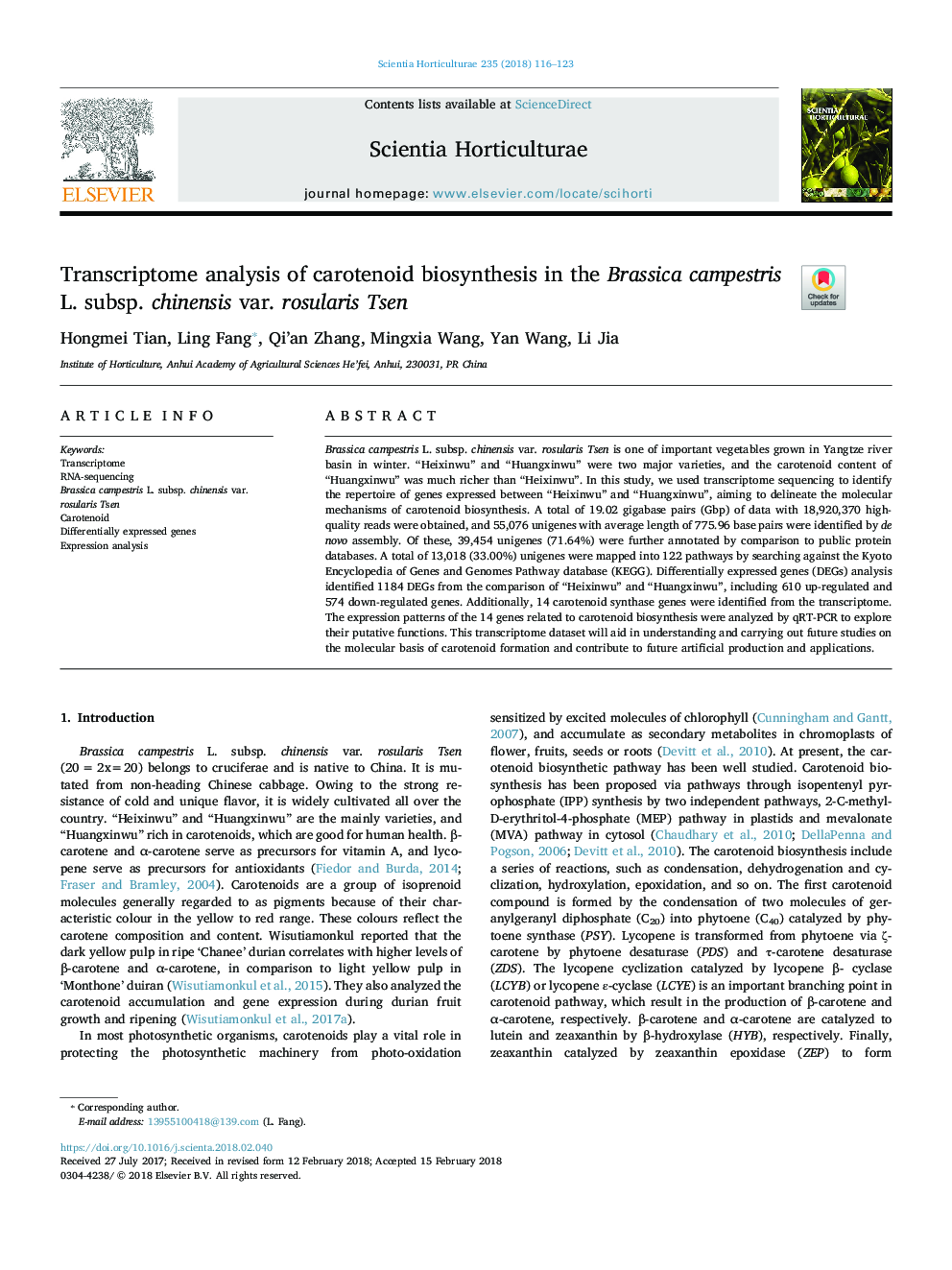| Article ID | Journal | Published Year | Pages | File Type |
|---|---|---|---|---|
| 8892672 | Scientia Horticulturae | 2018 | 8 Pages |
Abstract
Brassica campestris L. subsp. chinensis var. rosularis Tsen is one of important vegetables grown in Yangtze river basin in winter. “Heixinwu” and “Huangxinwu” were two major varieties, and the carotenoid content of “Huangxinwu” was much richer than “Heixinwu”. In this study, we used transcriptome sequencing to identify the repertoire of genes expressed between “Heixinwu” and “Huangxinwu”, aiming to delineate the molecular mechanisms of carotenoid biosynthesis. A total of 19.02 gigabase pairs (Gbp) of data with 18,920,370 high-quality reads were obtained, and 55,076 unigenes with average length of 775.96 base pairs were identified by de novo assembly. Of these, 39,454 unigenes (71.64%) were further annotated by comparison to public protein databases. A total of 13,018 (33.00%) unigenes were mapped into 122 pathways by searching against the Kyoto Encyclopedia of Genes and Genomes Pathway database (KEGG). Differentially expressed genes (DEGs) analysis identified 1184 DEGs from the comparison of “Heixinwu” and “Huangxinwu”, including 610 up-regulated and 574 down-regulated genes. Additionally, 14 carotenoid synthase genes were identified from the transcriptome. The expression patterns of the 14 genes related to carotenoid biosynthesis were analyzed by qRT-PCR to explore their putative functions. This transcriptome dataset will aid in understanding and carrying out future studies on the molecular basis of carotenoid formation and contribute to future artificial production and applications.
Related Topics
Life Sciences
Agricultural and Biological Sciences
Horticulture
Authors
Hongmei Tian, Ling Fang, Qi'an Zhang, Mingxia Wang, Yan Wang, Li Jia,
